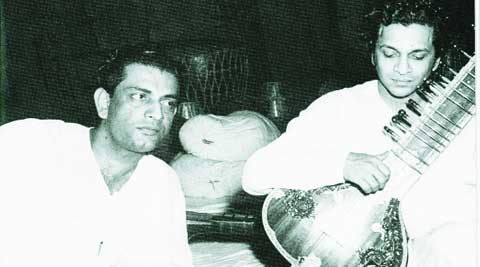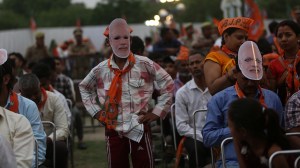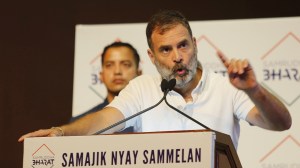- India
- International
The Director’s Baton
A new book exhumes the storyboard of Satyajit Ray’s unfinished film on sitar maestro Ravi Shankar.
 Ray and Shankar’s creative partnerships found place in many films.
Ray and Shankar’s creative partnerships found place in many films.
In Satyajit Ray’s Pather Panchali, the filmmaker’s debut masterpiece based on the1929 novella of the same name, young Durga greets the monsoons with a peacock dance. She twirls, bends forward, as her brother Apu looks on. It’s not hard to spot a certain radiance in the children, as their laughter breaks the pathos and poverty for a brief moment.
One of the more memorable scenes from the filmmaker’s oeuvre, it finds its meaning from a delicate composition in raag Desh, which has been strung together in the background. There are also the strains of sitar in the poignant Todi, which unfurl after Durga’s death, the desolation of it all translated through its komal (dissonant) notes. Composed and played by sitar maestro Pandit Ravi Shankar, the notes fall with spontaneity, just like the rain on Durga’s face and the sadness on Harihar’s home. Shankar’s folk yet seasoned orchestral pieces also featured in rest of the Apu Trilogy. But the passages were composed during an 11-hour marathon music session for Pather Panchali (1955), the one that arguably inspired Ray to create a storyboard for a documentary “A Sitar Recital by Ravi Shankar”.
Comprising a detailed screenplay, from alaap to jhala, the sketches put the contours of a Shankar concert under the spotlight through a string of frames drawn by the filmmaker. Replete with drawings in ink — with a constant juxtaposition of trees, flowers, fall of dry leaves, a Rajasthani woman playing an ektaara with zoomed-in shots of sitar and tabla, and sculptures — Ray could have easily had Desh or Todi, his favourite ragas, at the helm in the film.
But this is the story of a film that was never filmed. Instead, it was buried amid numerous documents and drawings in Ray’s Bishop Lefroy Road residence in Kolkata, until the notebook was discovered by his son Sandip Ray after his demise in 1992. “The vividness of it is amazing. I’m absolutely awestruck by the movement, the technical detail with which Baba created these sketches,” says Sandip, who has now ungraved the storyboard and put it into a book titled Satyajit Ray’s Ravi Shankar – An Unfilmed Visual Script (Harper Collins, Rs 399) that was released on May 2, on Ray’s 93 birth anniversary. The book that contains photographs of Ray and Shankar and interviews of the two, also delves into the camaraderie they shared.
While the storyboard isn’t dated, Sandip is sure that it was created after Pather Panchali. “His storyboard style changed later. He was only creating thumbnails after that,” says Sandip. The story opens with sketches of the sunlight segueing from the window into a sombre Shankar. Ray connects the sketches with his own handwritten notes, and makes transitions from one scene to other as he “trucks forward”, “pans”, “dissolves” and in the process creates myriad moods of the maestro.

And soon enough, after having reached a crescendo by way of zoomed-in shots of sitar, most likely depicting the frantic sitar strokes, the visuals surge back from where they began, like coming back to the sam (the first beat of the cycle). “I still don’t know why he didn’t make this one. The most plausible reason can be that my father was busy making films, while Panditji was busy travelling. The twain never met,” says Ray.
Apr 24: Latest News
- 01
- 02
- 03
- 04
- 05







































